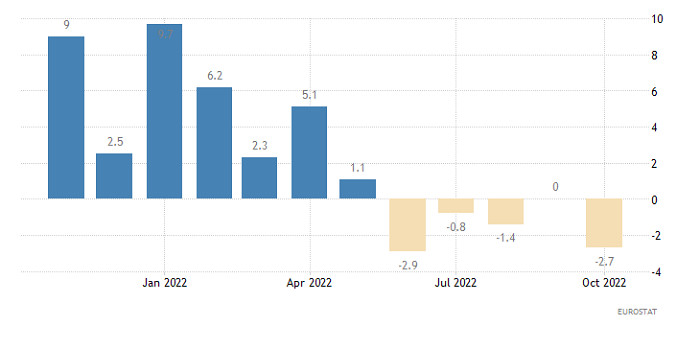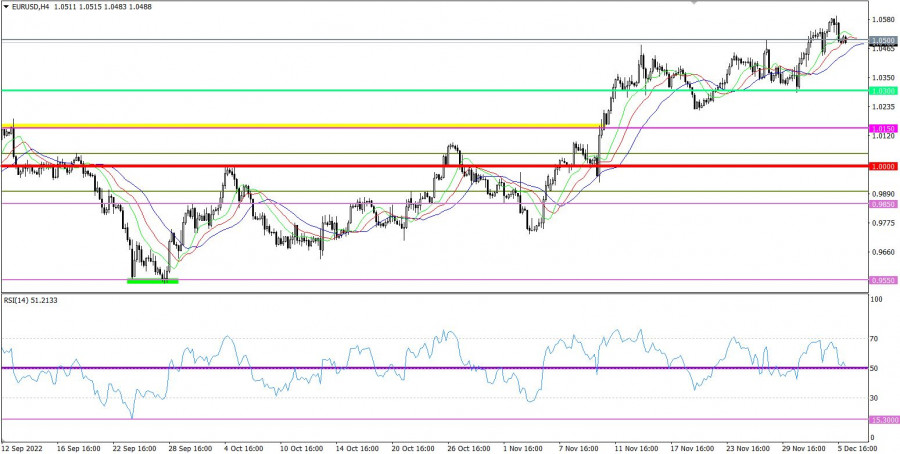
At first sight, the situation seems logical. The eurozone retail sales dropped, thus boosting the greenback. The indicator slumped by 2.7%, whereas economists had expected a decline of 2.2%. Even the revision of the previous data to 0.0% from a 0.6% drop is unlikely to improve the situation. The only problem is that the US dollar started rising only at the beginning of the US trade. At the moment of the publication of the report, the market was stagnant. It seems that Europeans are not very attentive to the situation in the eurozone. However, US citizens are closely monitoring the situation. This could be explained by the fact that the better part of funds circulating in the financial market is controlled by the US banks and funds. That is why very often, the market reacts to various events only during the US trade. When the US markets are closed because of various reasons, the currency market gets stuck. Only very important events, including the publication of inflation reports and central banks' meetings, may change the overall situation.
Eurozone Retail Sales

Today, the macroeconomic calendar is absolutely empty and traders have nothing to rely on. That is why they will take a close look at some other events. Notably, Russia's responsive measures to the introduction of the oil price cap are one of the most important events. However, Moscow has not done this yet since it usually takes a lot of time. It is likely to make a decision only by the end of the week. Against the backdrop, traders have to rely only on technical factors.
The euro declined against the US dollar after it approached the level of 1.0600. As a result, the euro lost more than 100 pips. Notably, this movement could be explained by a high overbought level.
On the four-hour chart, the RSI technical indicator is signaling overbought conditions. The indicator dropped to the level of 50 amid the current bounce.
In the same period, the Alligator's MAs are headed downwards. If the correction phase lasts longer, the signal lines will change their direction. On the daily chart, the indicator is ignoring local price changes. Its MAs are headed upwards, which corresponds to the general uptrend.

Outlook
Under the existing conditions, the price settlement below 1.0500 may lead to a full-scale correction. In this case, the pair may slide at least to 1.0300.
The upward scenario will become possible if the price climbs above 1.0500. However, a technical signal of stronger bullish sentiment will appear only if the price consolidates above 1.0600 on the four-hour chart.
In terms of the complex indicator analysis, we see that in the short-term and intraday periods, technical indicators are pointing to a bounce. In the mid-term period, indicators are reflecting the uptrend.